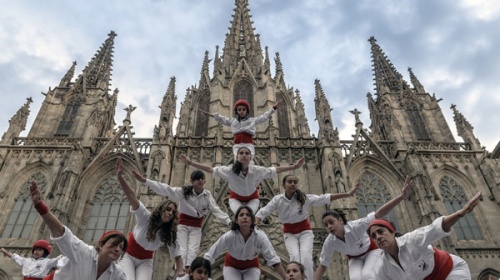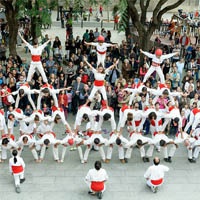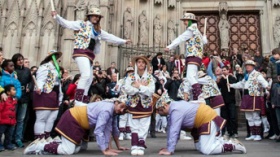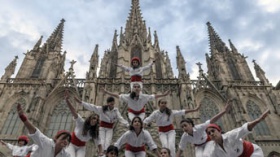Falcons
Falcons are gymnastic and acrobatic constructions. They take different forms based on daring and very spectacular human compositions.
Their origins can be traced to a Czech youth association called Sokol (which means 'falcon') that was founded in Prague at the end of the 19th century. It's goal was to provide young Slavs with a cultural education. Gymnastics were seen as essential to achieving the Sokol ideal and that included building some human constructions.
The falcons were introduced to Catalonia by the Federació de Joves Cristians, which was set up in 1931 and led by Msgr Albert Bonet i Marrugat. Its members were known as fejocistes. The federation was based on the Orel model, the Catholic model of the Sokol movement, and the fejocistes organised lots of groups performing what were called gimnàstica de conjunts, a series of synchronised exercises and constructions. They were dissolved during the Civil War, when the federation disappeared.
But in 1942 the colla de falcons appeared in Llorenç del Penedès. This group, which had no links with the fejocistes, played a very important part in a new model that has spread from the Penedès region as far as North Catalonia (Roussillon) so that, today, there are 11 colles.
The falcons construct figures, which have a very strong visual impact and names that reflect their final shape, such as the windmill, the stairs and the pyramid.
Barcelona has one colla de falcons, who made their official debut at the Santa Eulàlia festival in 2003. Their repertoire includes a figure they have created themselves and which is called the fir tree.









